After assembling a few dozen of Triangles / Square, I figured its time to design something more easy to assemble. First conclusion was that a led at both sides may be fun, but is much harder for production either by hand or by machine. So the first move was to design a single side led elements. (Available on GitHub ). For the second conclusion i figured its time to work on paneling the elements, so that the assembly process will be on multiple boards simultaneously.
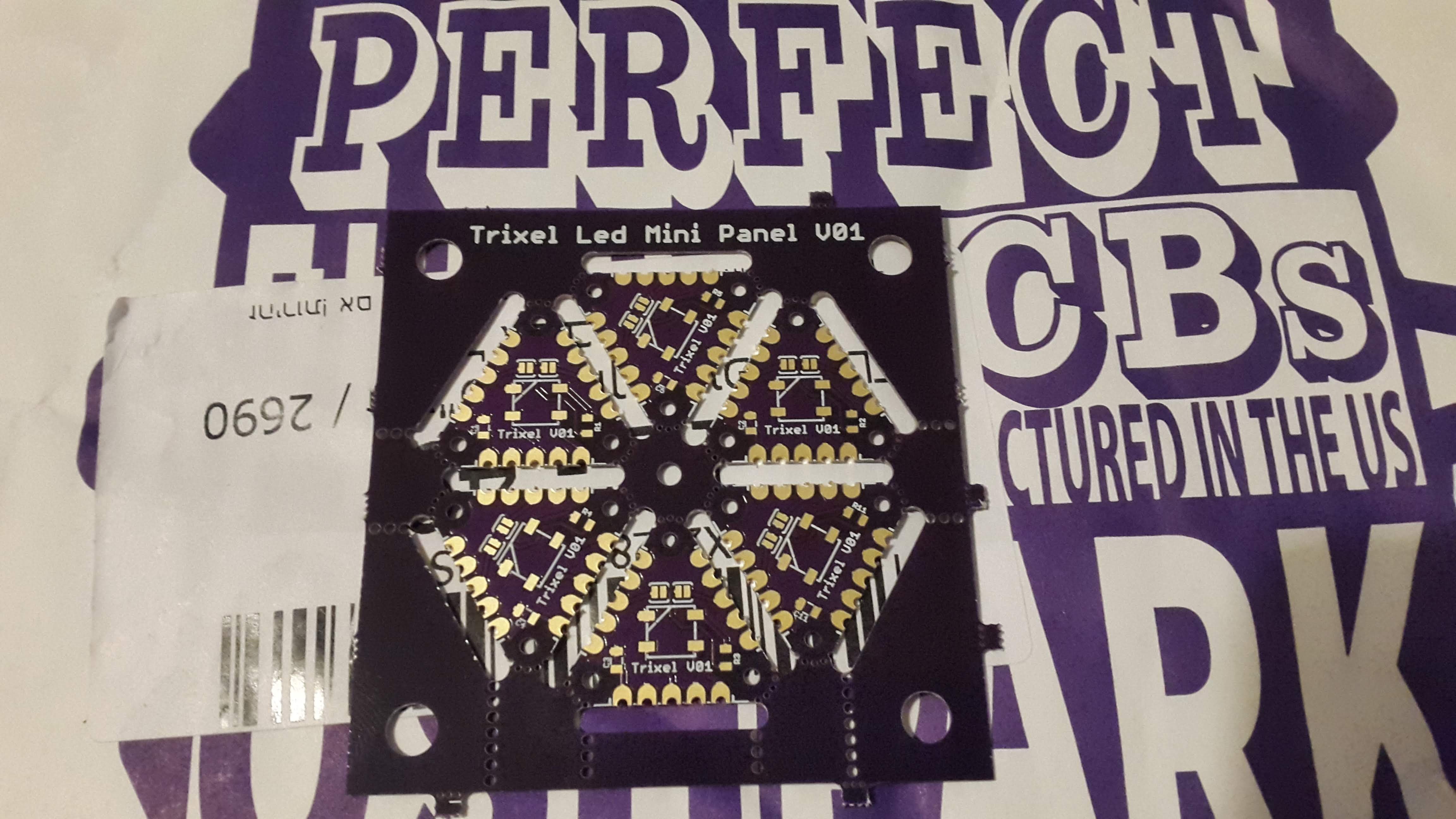
As for the elements, I have learned a bit more proper design and implemented that in the new files, making the design a bit cleaner, and implementing a small robustness in the circuit by adding a limiting resistor for each led output. in order to help saving the led in case of shorts for the output. In addition the transition to single side leds allows soldering 2 boards back to back, and by that increasing the flexibility to route the leds in different directions while keeping the option for leds on both side of a pcb ( making a thicker PCB).

Creating a good panel requires some experience, and for that I am highly grateful for the huge amount of feedback and suggestion I got from Dan at OSHPARK He definitely saved me several iterations. From the experience I can provide my two cents for paneling a PCB.
There are various documentations as for how to make a panel and the available methods, V - cut, stamp holes. milling etc. each manufacturer has it`s one requirements and before applying a design I suggest reading thoroughly the documentation from the specific manufacturer.
Since most of my board has castellated holes, i chose to use the stamp holes method to separate the boards, easy said hard to implement. Since there are various requirements for stamp hole diameter and the distance from the holes which will influence how easy the boards will be separated while not falling apart during manufacturing. OSHPARK has a great documentation for that with a few suggestion.
My work method iclude working both with eagle and fusion360, since autodesk has bought eagle the programs are becoming more "friendly" with each other. I start designing with fusion360 since you can make the design parametric and easy to change.
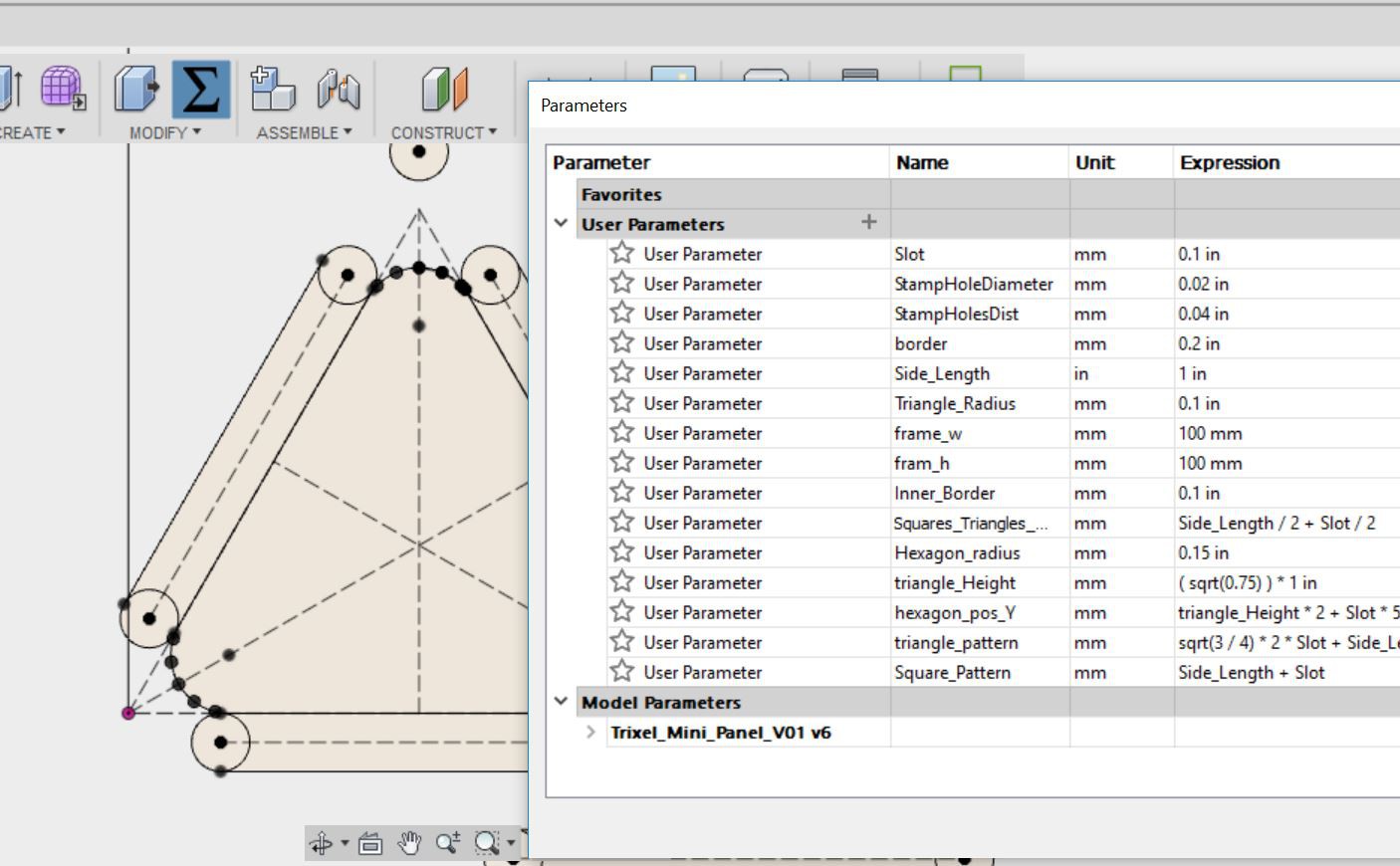
After some experimenting and attempts, I have chosen stamp holes at 0.02in (0.5 mm) diameter, and at a distance of 0.04in (1 mm). positioning them on the outer edge of the board. The milling space was set to 1 in (2.5 mm). The design results looked like that. (and available here: Trixel Mini Panel Fusion360)
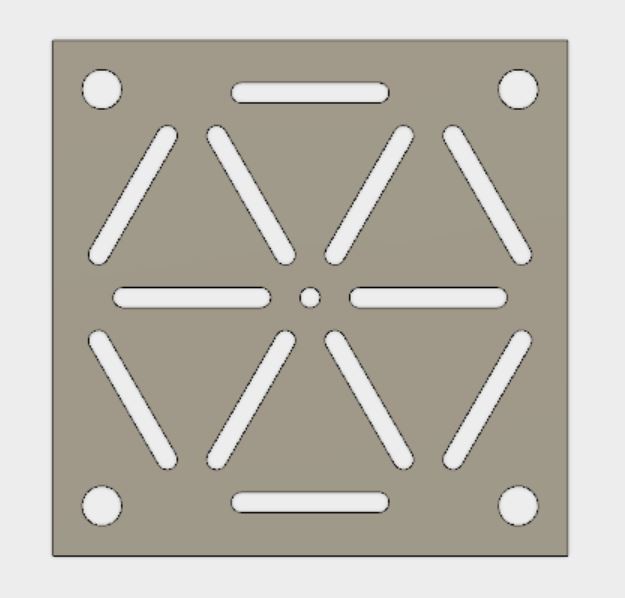
From here I export the design as a dxf file to be imported into eagle. One for the stamp holes position which are implemented for the elements, and another for the panel file which should be the dimension layer in eagle. since the eagle import dxf isn`t perfect, some manual fixes are required. Here is the result after duplicating the triangles into the panel file.
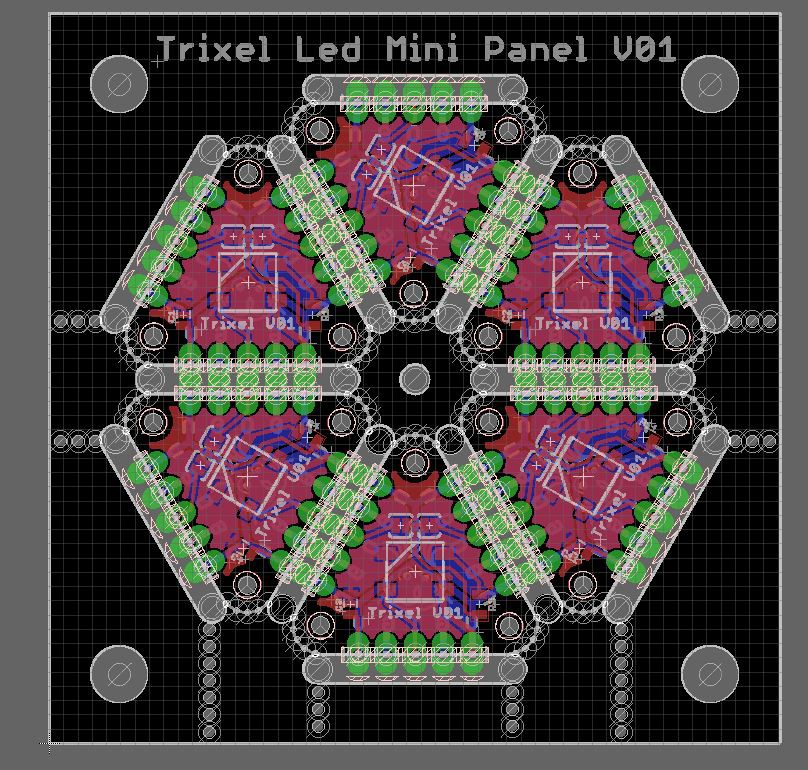
In order to be able to separate the boards from the panel some stamp holes were added allowing to break the panel. ( Thank you Dan , you have definitely saved me an iteration here). The Panel stamp holes are a bit larger, 0.4 in ( 1 mm ) at a distance of 0.6 in ( 1.5 mm ).
Breaking of the boards out of the panel is highly satisfying :)

The separated boards look awesome and now it is the time to make something of them.

I have decided to make a closed shape out of the new triangles, and the easiest is 2 half's of 5 triangles each.
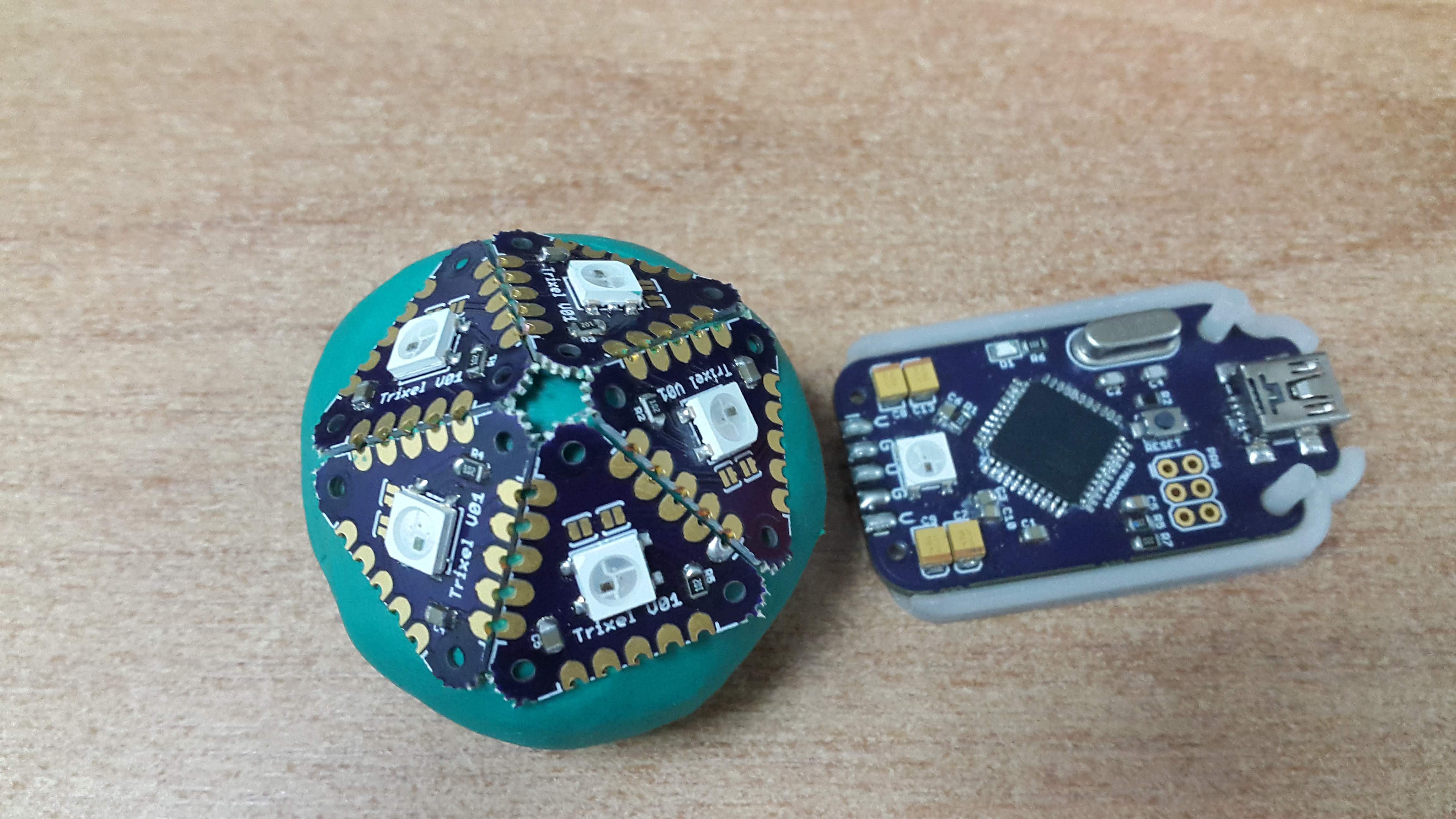
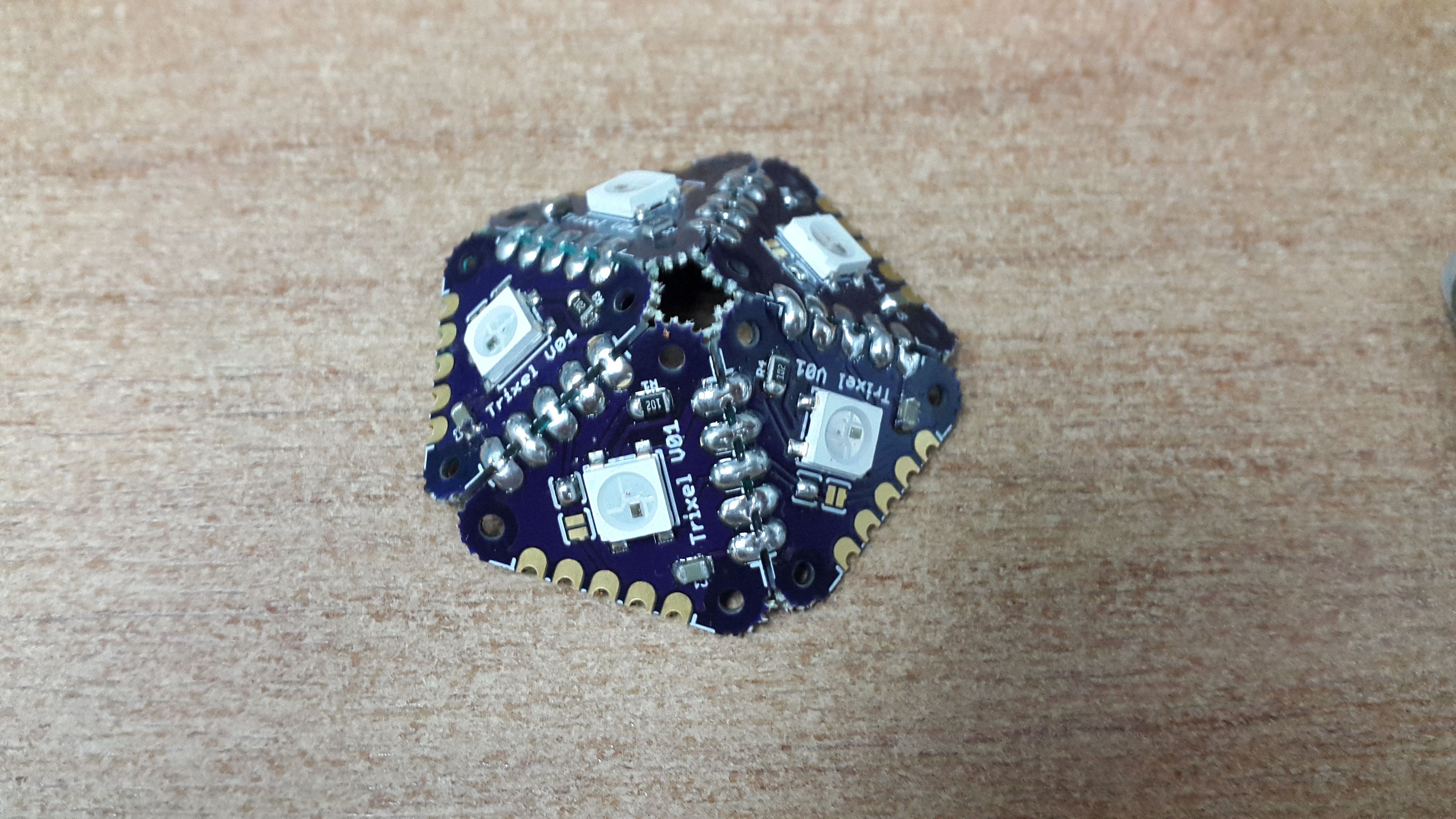
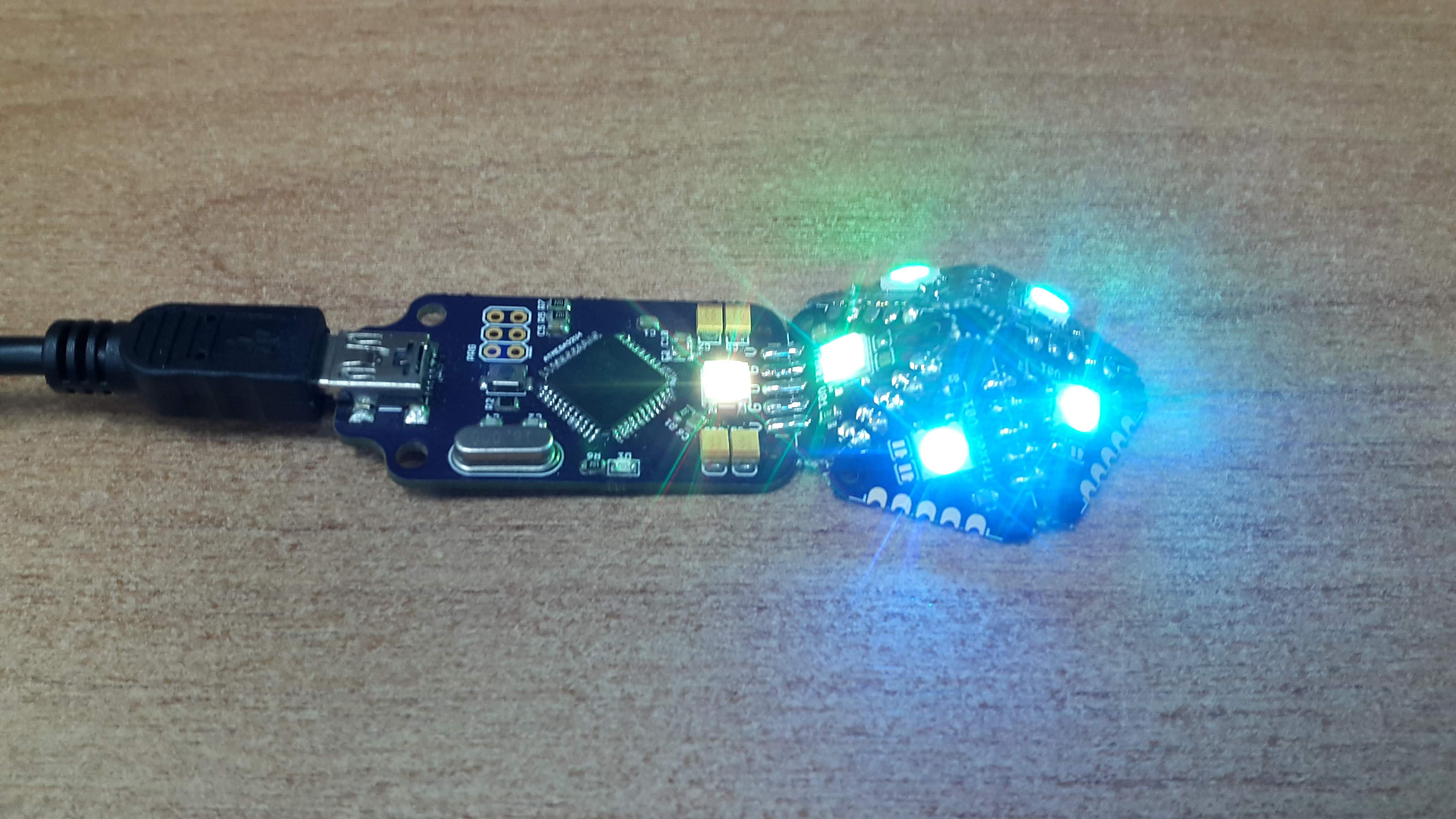
Adding some diffuser elements:
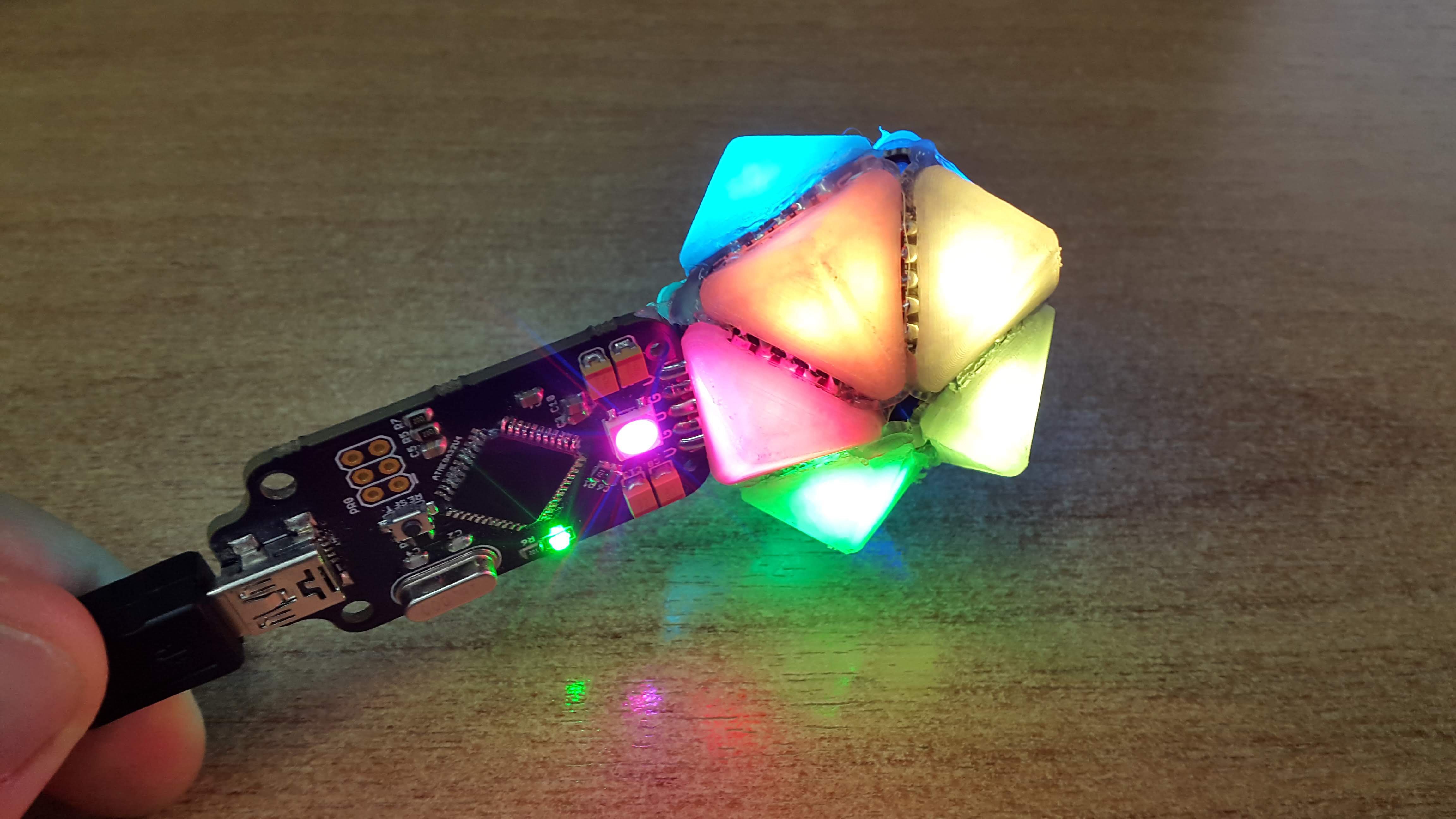
And that is how it looks
Some conclusions:
- Assembling a panel is way way faster. especially applying the solder paste.
- The boards snap out quite easy, but i would suggest a bit larger stamp holes for the triangles or positioning them a bit closer. I think this is something which is needed to be discussed with the manufacturer since not every design is acceptable. The risk that the elements will break out during manufacturing may cause them to reject your design.
- for closed shapes i will need to design some jigs, as they are not always get aligned properly.
Next version panel will also include the hexagon MCU, 22 triangles and 8 squares. Perhaps the required elements for a sphere made with triangles and squares...
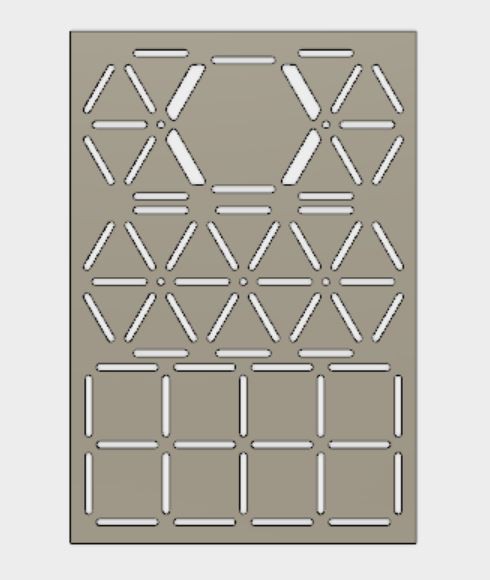
 Arkadi
Arkadi
Discussions
Become a Hackaday.io Member
Create an account to leave a comment. Already have an account? Log In.